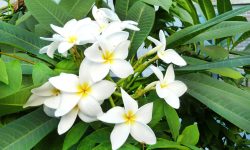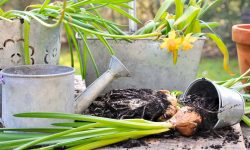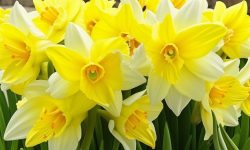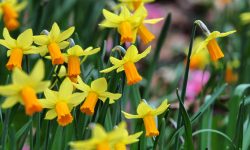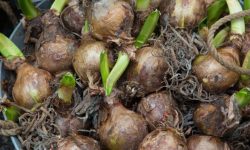Lavender, with its fragrant spikes and silver-green foliage, is one of the most cherished perennials in both ornamental and herb gardens. Gardeners adore it not only for its calming scent and stunning purple hues but also for its drought resistance and ability to thrive in poor soils. One essential practice that keeps lavender productive and visually appealing throughout the growing season is deadheading. Done correctly and at the right time, deadheading can significantly increase the number of flowers, extend blooming, and improve the plant’s overall appearance.
Understanding how to deadhead lavender the right way helps unlock the full potential of this resilient plant. While lavender generally blooms once or twice a year depending on the variety, strategic deadheading encourages it to send out new flowering shoots. More than a cosmetic practice, deadheading is a signal to the plant to keep growing and blooming. Without it, the lavender would naturally transition into seed production mode, leading to fewer flowers and an earlier end to its bloom period.
In this guide, we’ll explore the practical techniques behind deadheading lavender, when to do it, why it works, and how it integrates with your broader lavender care routine. Whether you’re growing English lavender, French lavender, or Spanish lavender, this process can dramatically improve your plant’s longevity and floral output.
Why Deadheading Lavender Promotes More Flowering
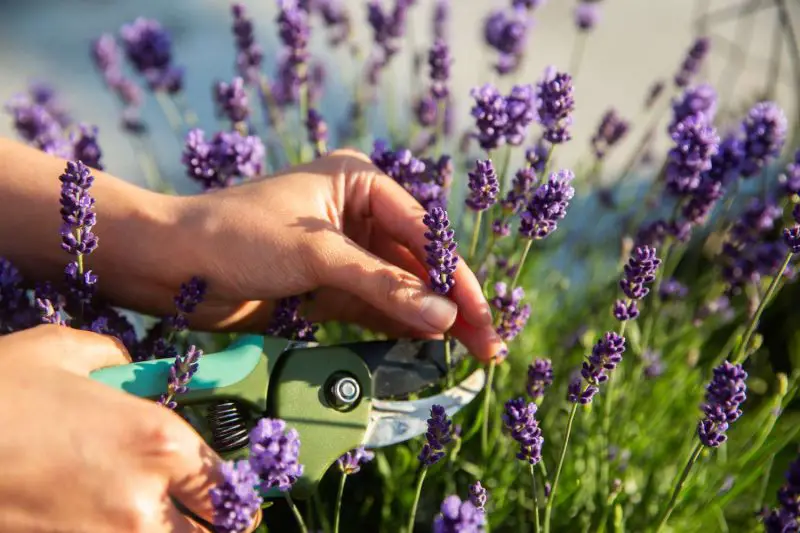
Deadheading is the removal of spent or faded flowers from a plant. In lavender, this practice is especially useful because the plant responds strongly to being trimmed. Once lavender flowers begin to fade, they enter the seed-forming phase. During this stage, the plant redirects its energy away from producing more flowers and toward maturing seeds. For gardeners who want prolonged blooming rather than seed harvest, this shift is undesirable.
By removing the spent flower heads before seed production begins in earnest, you signal to the lavender that its reproductive mission has not yet been fulfilled. The plant then tries again by pushing out new buds, often leading to a second flush of blooms later in the season. This is particularly effective with varieties such as English lavender, which is more likely to rebloom when properly maintained.
The process also encourages branching. When flower spikes are cut back, the lavender develops lateral shoots just below the cut point. These new branches are often capable of producing their own blooms, resulting in a fuller plant with more flowering points. Over time, this builds a bushier structure that looks attractive and is more productive year after year.
Deadheading also keeps your lavender neat and tidy. As the flowers fade, they lose their vibrant color and begin to brown or gray. These spent spikes can detract from the overall appearance of the plant. Removing them promptly maintains a fresh, orderly look in your garden beds or containers.
When to Begin Deadheading Lavender
Timing is key when it comes to deadheading lavender for maximum effectiveness. The best time to begin is when the flowers are just past their peak, often when the vibrant purple color starts to dull and the petals begin to dry or fall off. At this stage, the plant is still relatively active, and removing the faded blooms will likely result in new flower production.
For most lavender varieties, the first bloom appears in late spring or early summer. This is typically the largest flush of flowers. Once these blooms begin to fade—usually by midsummer—it’s time to start deadheading. The sooner you act after the flowers decline, the more likely you are to see a second round of flowering before the growing season ends.
The exact timing may vary slightly depending on your climate, the type of lavender you’re growing, and your region’s hardiness zone. English lavender, for instance, responds well to midsummer deadheading and may produce a smaller but still beautiful second bloom in late summer or early fall. French and Spanish lavenders tend to bloom earlier and more often but may not rebloom as strongly after deadheading.
Consistency is important. Once blooming begins, make it a habit to check your plants every week or two. Catching fading flowers early ensures that the plant doesn’t expend unnecessary energy on seed formation. This practice sets the stage for a longer, more abundant blooming season.
Identifying Spent Lavender Blooms for Removal
Recognizing when lavender flowers are ready to be removed is essential to successful deadheading. Lavender flower spikes bloom from the bottom up. As they age, the lower flowers will begin to fade and dry out first, while the upper parts may still look fresh. This makes it slightly more complicated to determine the right moment for removal.
The key indicator is the overall look of the flower spike. When the majority of the individual blossoms on the spike have turned brown or gray, it’s a sign that the bloom has run its course. The flower stem may also begin to lean or lose rigidity as it ages. In some cases, you may even see the beginnings of seed formation at the base of the flowers.
It’s best to deadhead the entire flower spike rather than trying to pick off individual flowers. Cutting the full stalk promotes a cleaner shape and gives the plant a stronger response. Removing only part of the spike can result in uneven growth or lead to lingering plant energy being wasted on non-productive tissue.
In dry or windy climates, the fading process may be accelerated, so it’s even more important to monitor the plant closely. Regular observation helps you make timely cuts that lead to faster reblooming.
How to Cut Lavender Correctly When Deadheading
Proper cutting technique makes a significant difference in the success of your deadheading efforts. When removing spent lavender flowers, make your cut just above the first set of healthy leaves located below the flower stalk. This is the point where the new growth is likely to emerge. Cutting here stimulates lateral branching and encourages the plant to produce more flowering stems.
Always use a pair of clean, sharp pruning shears or scissors to avoid tearing the plant tissue. Clean cuts heal faster and reduce the risk of introducing diseases through the wound. If you’re working with several plants or have had disease issues in the past, it’s a good idea to disinfect your tools between each plant.
For soft-stemmed lavenders or newer growth, hand-pinching can sometimes suffice. However, cutting is generally more precise and effective, especially when you want to encourage uniform regrowth. Avoid pulling or snapping flower spikes, as this can damage the plant and may inhibit new growth in that area.
While deadheading, take care not to cut too deep into woody stems. Lavender doesn’t regenerate well from old, hardened wood, especially in mature plants. Sticking to green, flexible growth ensures you’re trimming in areas where the plant can bounce back quickly with new shoots and blooms.
The Best Tools for Lavender Deadheading
Having the right tools on hand makes deadheading lavender easier and more efficient. A pair of high-quality bypass pruners is ideal for cutting flower spikes cleanly. These pruners work like scissors, allowing you to make precise cuts without crushing the stem. For small or container-grown lavenders, sharp garden scissors can also be effective.
A pair of gloves is useful, especially when working with multiple plants. While lavender isn’t particularly thorny, the stiff, dry flower stalks can cause minor scratches or irritation. Gloves also help you handle the plant more confidently when reaching into dense growth.
If you’re deadheading a large bed or hedge of lavender, carrying a collection basket or bucket makes cleanup faster. Keeping the garden free of dead flowers helps prevent fungal spores or pests from accumulating on the ground below the plant.
It’s also a good habit to carry a cloth or spray bottle of rubbing alcohol to sterilize your cutting tools between uses. This simple step helps prevent cross-contamination between plants, especially if you notice signs of disease or mold.
Deadheading and Seasonal Lavender Care
Deadheading should be seen as part of a broader seasonal care strategy for lavender. While it plays a central role in encouraging more flowers, it works best when combined with good watering, pruning, and site conditions.
Lavender thrives in full sun and well-draining soil. Poor drainage can lead to root rot, which is fatal to most lavender varieties. Avoid overwatering, especially during humid periods, as lavender is highly adapted to dry conditions. Water deeply but infrequently, allowing the soil to dry out between waterings.
After deadheading, consider feeding your lavender lightly with a low-nitrogen fertilizer or compost tea. This helps support new growth without pushing excessive foliage, which can compromise airflow and flowering. Too much nitrogen can also lead to weaker stems and fewer blooms.
In late summer or early fall, you can perform a light shaping trim to maintain the lavender’s compact form. However, avoid heavy pruning too late in the season, as this can stimulate new growth that may not harden off before winter, especially in cooler climates.
In early spring, pruning helps rejuvenate the plant and prepares it for the upcoming bloom. Always pair your pruning and deadheading routines with consistent observation of the plant’s health and growth habits for best results.
Encouraging Long-Term Blooming with Regular Deadheading
Once you incorporate deadheading into your regular garden routine, you’ll begin to notice a dramatic difference in how your lavender performs. Plants that are deadheaded regularly tend to bloom more frequently, produce more compact and bushy growth, and maintain better structure overall.
In climates with longer growing seasons, regular deadheading may even yield a third round of blooms, depending on the variety. This is particularly true for English lavender and its hybrids, which respond enthusiastically to consistent trimming and care.
Additionally, long-term deadheading helps delay the woodiness that can affect older lavender plants. By encouraging fresh growth and removing fading stems, you stimulate the production of new shoots that maintain the plant’s youthful shape. This extends the life of the plant and postpones the need for replacement or division.
It’s also worth noting that deadheaded lavender plants contribute more to pollinator health. Fresh blooms provide nectar and pollen for bees, butterflies, and other beneficial insects, while faded or seed-producing spikes offer little nutritional value.
FAQs About How to Deadhead Lavender the Right Way for More Flowers
How often should I deadhead lavender?
Lavender should be deadheaded whenever the blooms start to fade, typically every one to two weeks during the flowering season. Regular checks help you catch the right moment.
Will all types of lavender rebloom after deadheading?
English lavender is most likely to rebloom if deadheaded properly. French and Spanish varieties may have limited reblooming potential but still benefit from deadheading.
Can I use my fingers to deadhead lavender?
For soft stems and recent blooms, pinching by hand can work. However, using sharp shears gives cleaner cuts and encourages better regrowth.
Is deadheading the same as pruning?
No, deadheading removes spent flowers to encourage reblooming. Pruning, usually done in spring or fall, shapes the plant and removes woody growth.
What happens if I don’t deadhead my lavender?
Without deadheading, lavender shifts energy to seed production, leading to fewer new flowers and a shorter blooming period.


